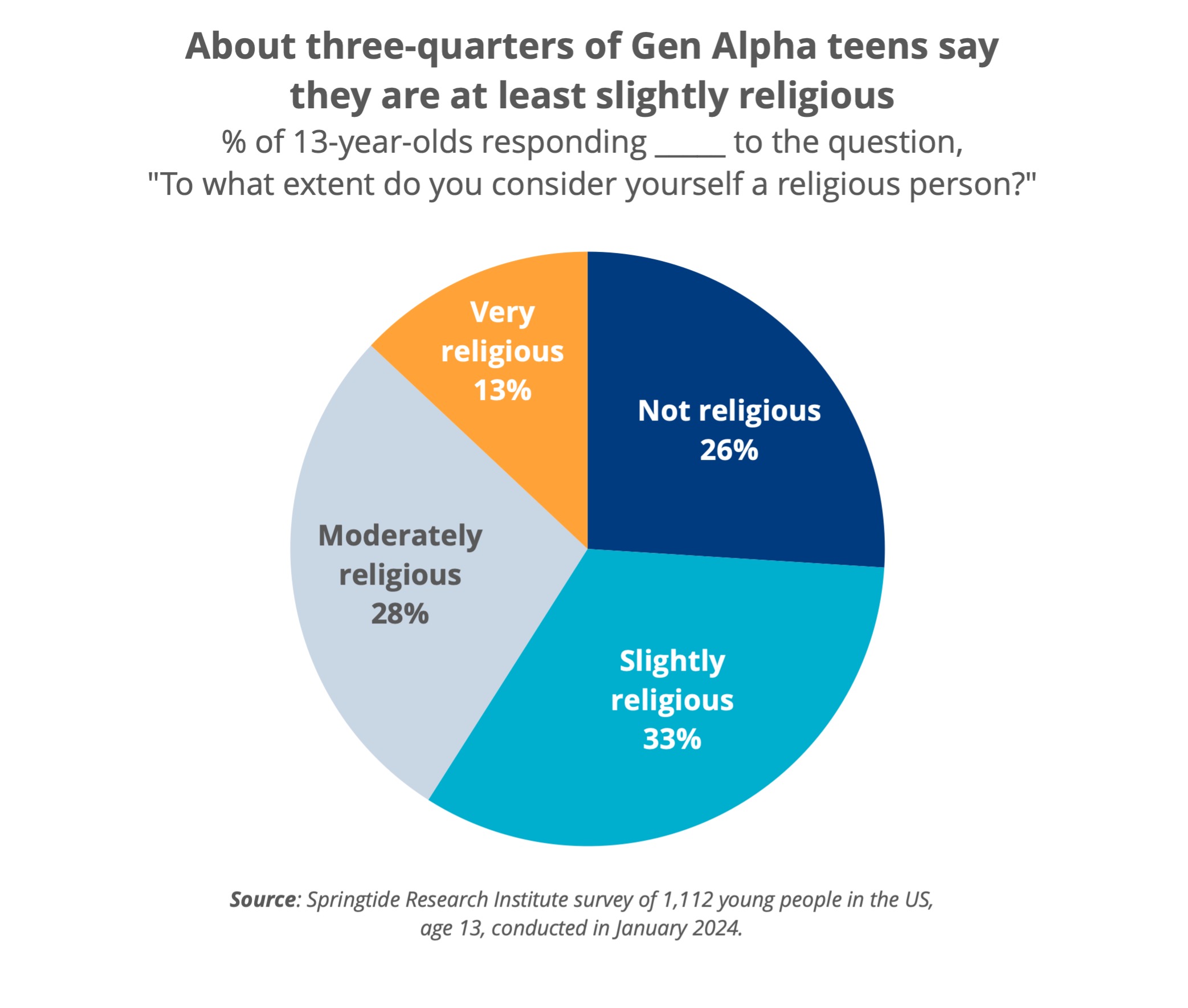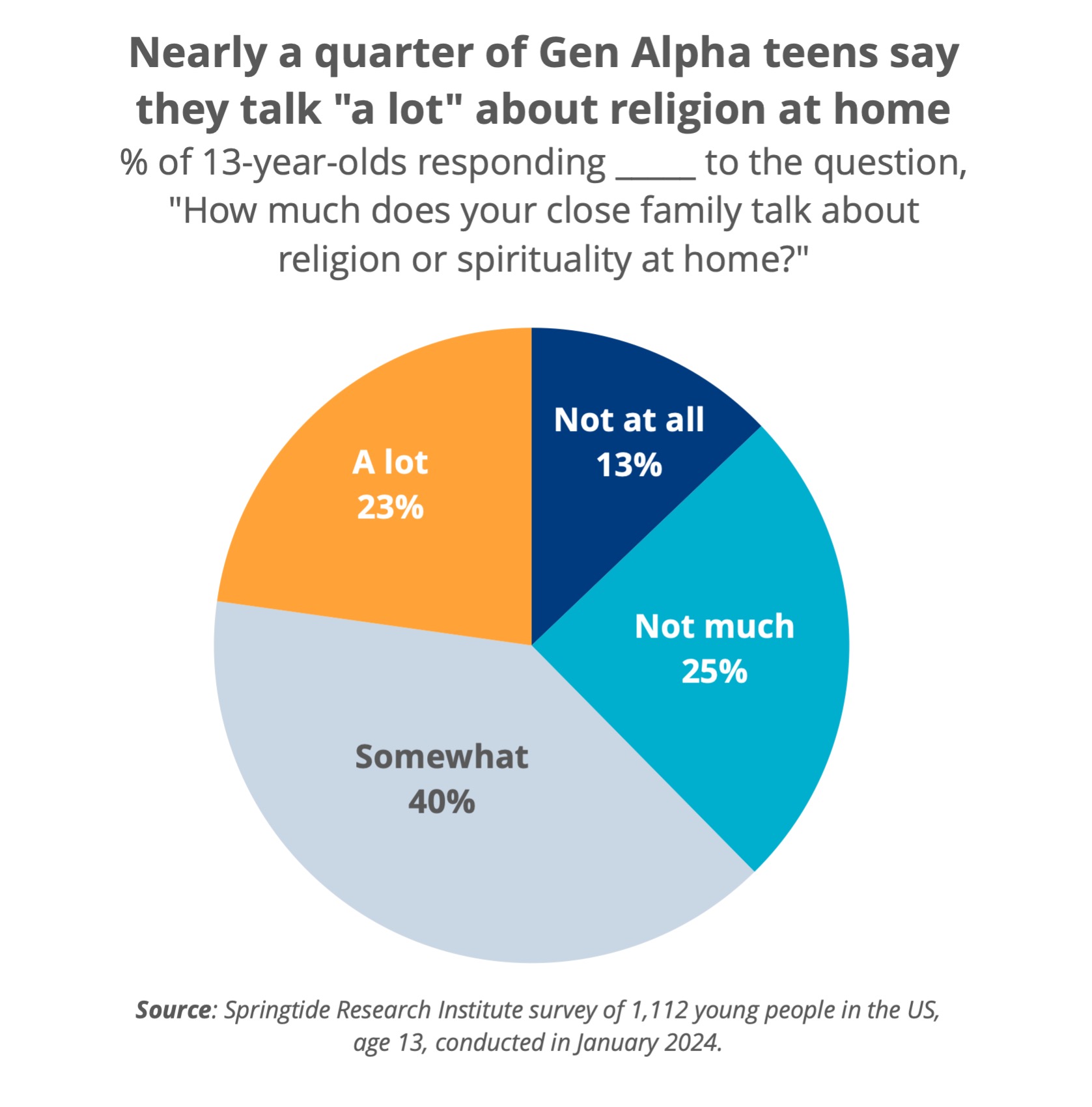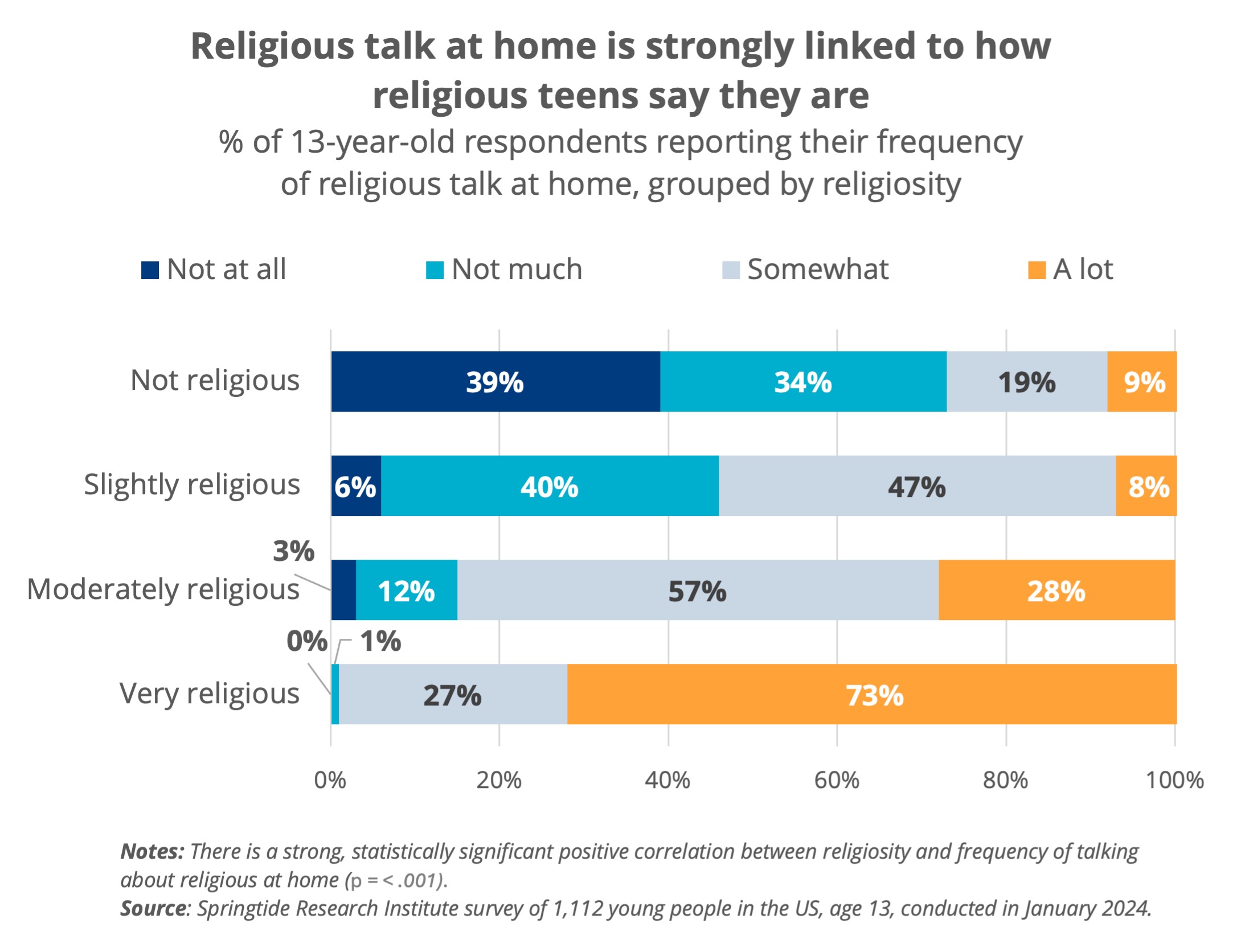
Talking about religion at home matters for teen faith

When it comes to discussing religion at home, most teens fall somewhere in the middle: 40% say their families talk “somewhat” about religion, while 23% say these conversations happen “a lot.” A quarter (25%) say their families talk about religion “not much,” and 13% say they do not talk about it “at all.”

How do religious discussions relate to teen faith?
The frequency of religious discussions at home is strongly linked to teens’ personal religiosity—in other words, how religious young people say they are. Among respondents who identify as not religious, 39% report that their families “do not talk at all” about religion at home, and 9% say their families talk about religion “a lot.” By contrast, among those who identify as very religious, 73% report that their families talk about religion “a lot,” while none indicate that their families do not talk about religion at all. The pattern is consistent across intermediate levels of religiosity as well: as personal religiosity increases, the share of respondents reporting more frequent religious discussions at home also increases.

Furthermore, the frequency of religious talk at home is a significant positive predictor of religiosity. Teens who discuss religion at home more often are significantly more likely to consider themselves religious. In fact, for every unit increase in the frequency of religious talk at home (for example, from talking “not at all” to “not much”), Gen Alpha teens were nearly 5 times more likely to report a higher level of religiosity.
Conclusion: Talking about religion with teens
These findings point to a meaningful connection between family conversations about religion and teens’ self-reported religiosity. For families and faith communities alike, fostering open dialogue about religion, faith, and spirituality may play a key role in shaping how the next generation understands and expresses their identity and beliefs.
Note: The data featured in this Data Drop come from Springtide Research Institute’s 2024 study on 13-year-olds. See survey responses in the topline survey results and review methodology here.



